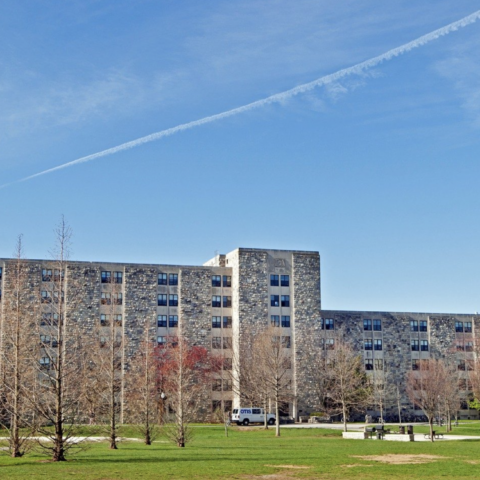By Emily Maloney
Recent discussion surrounding the ethics of higher education has mainly concerned the wellbeing of students, such as the highly publicized instances of campus sexual assault and the debate over rising tuition rates. However, teachers are often disregarded when evaluating the practices of universities. Upon close inspection, one group is significantly undervalued and unfairly treated: the adjunct professors.
Adjunct professors are part-time instructors hired by universities and colleges on a semester basis to teach whichever classes the university requires of them. As non-tenured instructors, adjuncts are typically afforded no health benefits, little to no input on university or department policy, low job security, and often not even an office to meet with students.
Even more concerning, NPR reports that the average salary for adjunct professors is $20,000-25,000 every year. Considering the number of hours they must devote to planning, teaching, and grading, this is slightly over minimum wage, which is $15,000 per year, and usually around or right above the living wage. Adjunct professors also often teach classes at multiple campuses. Factoring in transportation time and differing university policies, the workload increases exponentially. By comparison, the average annual pay for a tenured or tenure-track professor is $95,224.
Recent horror stories have illuminated the realities of life for adjunct professors.
Margaret Mary Vojtko, an adjunct professor of twenty-five years at Duquesne University died of a heart attack shorly after being told that the university would not be rehiring her that semester; she had been working for $10,000 a year. She was given no severance pay and had no retirement plan or any health benefits, even after giving so much time to the university and its students. She had been almost homeless at the time, drowning in the debt of her medical bills, and had been called by Adult Protective Services because people were worried that she could not take care of herself.
In a response to a survey about quality of life for contingent professors given by the Service Employees International Union, one adjunct replied, “I lived off of fried potatoes and onions for the semester. I actually lived better as a grad student than I do now.”
One quotation, found in a report entitled “The Just-In-Time Professor,” produced by the House of Representatives Committee for Education and the Workforce reveals, “Because I was also the sole support of my two children (both of whom are gifted and honors students, I am proud to report), I relied on Medicaid to pay for the medical bills of my daughter. And, during the time I taught at the community college, I earned so little that I sold my plasma on Tuesdays and Thursdays to pay for her daycare costs. Seriously, my plasma paid for her daycare because I taught English as adjunct faculty.”
As harrowing as these stories are, they are not unusual. One quarter of part-time professors rely on welfare, Medicaid, or food stamps to make it through each year. Almost one third are living below the federal poverty line.
The practice of hiring adjunct professors originally began because universities were trying to lower costs to account for more and more administrative and non-faculty positions. At that time, there was also a surplus of graduate students willing to teach a small course load to have some income while earning their higher degrees. Naturally, hiring them and outsourcing some teaching jobs made the most economic sense. This reaches the root of the issue: the goal of universities seems ever increasingly to be about finding the most profitable course of action than that which provides students the best education.
Now more than 70% of instructional faculty at universities are non tenure-track instructors. Compared to a mere 21.7% in 1969, these hiring practices expose the change in how our universities view and treat college instructors.
Apart from how low wages and the lack of benefits affects the adjunct professors themselves, this practice of universities refusing to invest in full-time, tenured teachers directly reflects a lack of investment in student education. When teachers live in these situations, they have less time and energy to devote to students. Additionally, because these individuals do not have the stability of being tenure/tenure-track, student evaluations have a larger impact on their future – meaning they are less likely to challenge students or raise topics in discussions that may provoke dissent. All of this results in a lower quality education for college students.
Tenured and tenure-track professors themselves are also harmed by the rise in adjunct professors. Because adjunct professors do not have departmental responsibilities, tenured professors have to spend more effort on time-consuming administrative duties than they have in the past, cutting into their time for instruction and research.
This situation is reaching a critical point, with adjunct professors attempting to unionize and demanding benefits from universities. They are striking, tweeting, and writing about what they perceive as unethical exploitation, and it is beginning to attain national attention.
Sending this out #iammargaretmary #iammaryfaith #badmin Homeless #adjunct professor, Mary-Faith Cerasoli. Solidarity pic.twitter.com/Z88bcFyDry
— vocemom (@MMstrikesback) March 28, 2014
Students of #adjunct professors suffer when their prof can't give them proper attn bc they're teaching on 3 diff campuses to stay afloat.
— ThousandMovieProject (@howlingdecorum) September 21, 2015
Some have been successful. For example, in 2013, adjunct professors at Georgetown University unionized with the Service Employees International Union (SEIU) and were able to work with the university to produce a Collective Bargaining Agreement that laid out acceptable working conditions for the professors.
At the end of the day, adjuncts all over the country are often highly educated, compassionate, effective teachers that make a difference in their students’ lives every single semester. When they enter the profession, they are hoping to be lifelong educators, researchers, and mentors, but the university system is not allowing them to fulfill these goals. Universities need to be held accountable for their treatment of these professors both on a humanitarian basis, but also from the perspective of providing the best resources and educational experiences to students.
Photo Credit: madmikesamerica



